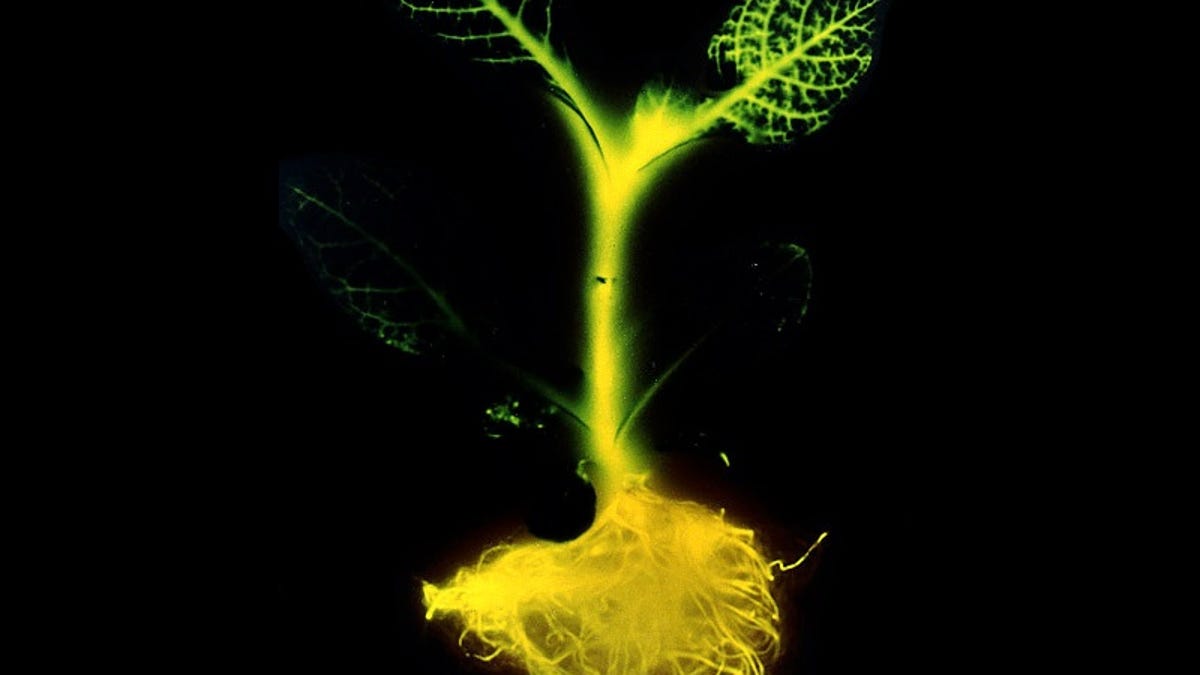Glowing plants could act as biological night lights
A Kickstarter project promises to deliver seeds and plants that glow in the dark, thanks to synthetic biology and designer DNA sequences.

Humans have a lot in common with magpies. We gravitate toward shiny things.
It's easy, then, to see why the Glowing Plants project on Kickstarter has more than doubled its goal and still has 38 days to go. It's a fascinating mix of botany, science, and unexpected glowing things.
Some people can boast a green thumb, but very few people can boast a glowing green thumb. For a pledge of $40, Glowing Plants will send you 50 to 100 seeds to let you raise your own glowing plant at home. The project's creators say that this is a one-off opportunity and the seeds will not be available commercially later on.
If you're not the gardening type, then a $150 pledge gets you a young glowing plant that already has had a good start to life. It's up to you to take care of it, feed it, and keep your cats from eating it.
Creating a glowing plant is not a simple process. First, the Glowing Plants team had to design DNA sequences using the Genome Compiler software program. The Kickstarter funds will be used to print the DNA, which is then inserted into Arabidopsis, a small flowering plant. The synthetic biology transformation allows it to glow in the dark, no blacklight required.
Here's the process in more detail: "Transforming the plant will initially be done using the Agrobacterium method. Our printed DNA will be inserted into a special type of bacteria which can insert its DNA into the plant. Flowers of the plant are then dipped into a solution containing the transformed bacteria. The bacteria injects our DNA into the cell nucleus of the flowers which pass it onto their seeds which we can grow until they glow!"
The Glowing Plants team looks to have the credentials to pull this product off. There's a biochemistry PhD, a mathematics master, and a cell and molecular biology PhD in the lead roles. While prototype glowing plants have been created, there's a chance that this first round of Kickstarter plants may not glow quite as much as people would like. "We hope to have a plant which you can visibly see in the dark (like glow in the dark paint) but don't expect to replace your light bulbs with version 1.0," the teams says.
Perhaps the best part of the Glowing Plants project is extrapolating what it could mean for the future. Imagine a dark street lined with biological lights. Whole gardens could be made to glow. It would be magical.

